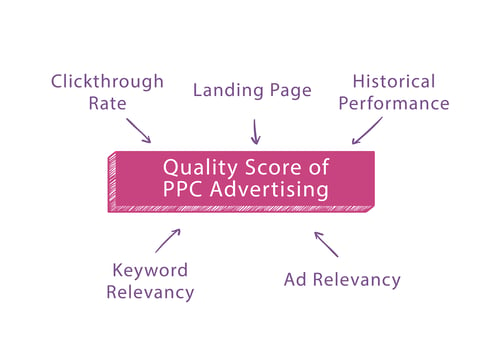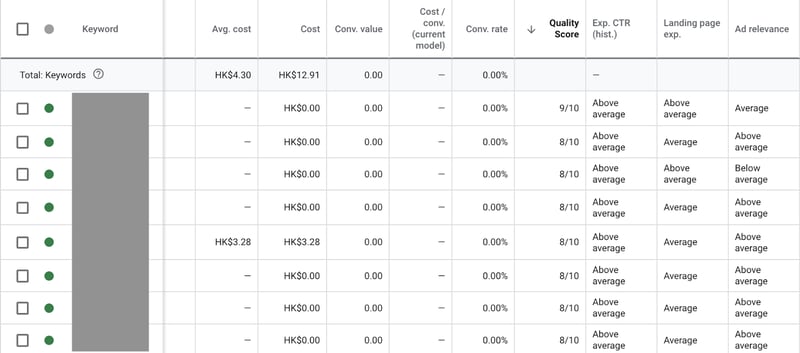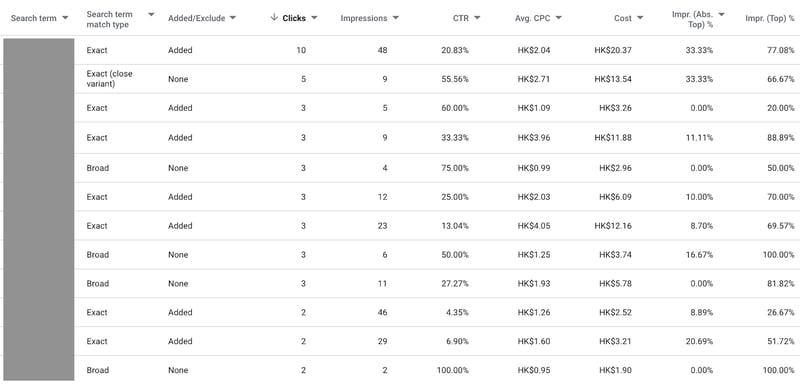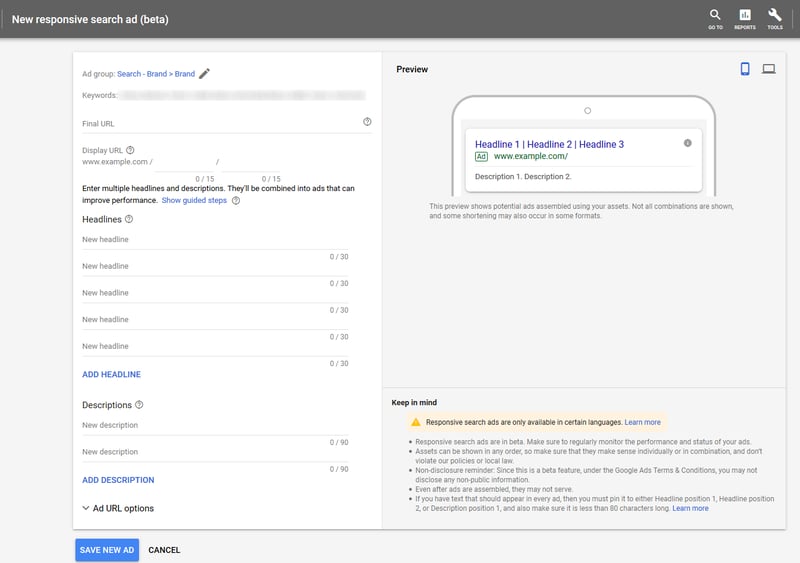In this blog, we’ve condensed a few practical tips on further optimizing your Google Ads campaigns. These tips will help you improve campaign performance, boost conversions, and increase traffic. These include Keyword Match Types, Responsive Search Ads, and more...
Now that you’ve set up your Google Ads campaign and running for a few weeks, there are a few tips that you can put into use to ensure that your eCommerce store will reach higher quality traffic and conversion. If you are yet to set up your campaign, we have a Step-by-Step Guide on setting up your first successful Google Ads Campaign.
When it comes to managing your campaigns, it may seem difficult to profit off of Google Ads’ seemingly tedious platform. However, don’t be discouraged by this, let us tell you how to optimize the existing functions to yield better performance and reach on your site!
One of Google Ads’ main highlights is that you have total control over your ad spending and ad copies. You’re also able to choose when you want your ads to appear and when they will show up. Google Ads also provides you with in-depth reports so that you’re able to monitor your performance, further optimizing and succeeding in reaching your target audience.
In this blog, we’ll be covering a few techniques to optimize your Google Ads Campaign:
- Tracking Your Metrics Effectively
- Maximizing Use of Keyword Match Type
- Making Use of Negative Keyword List
- Taking Advantage of Responsive Search Ads
Tracking Your Metrics Effectively
One of the most important metrics is Quality Score, which determines the Ad ranking and cost-effectiveness of your Ad spending. The higher the value of your quality score, the lower your cost-per-click simultaneously pushing your ad position upwards and increasing your visibility.
The quality score is determined by below factors: Clickthrough Rate, Landing Page, Historical Performance, Keyword Relevancy and Ad Relevance. You can check the quality score on Google Ads under “Quality Score”. Here, you’ll be able to check each individual component to track how your site’s performance and which component to work on optimizing or improving.
You can check the quality score on Google Ads under “Quality Score”. Here, you’ll be able to check each individual component to track how your site’s performance and which component to work on optimizing or improving.

A few tips to improve your quality score:
- Grouping relevant keywords by category to optimize your campaign structure
You should ensure that all the keywords in your ad group share a high degree of meaning. After grouping your keywords by category, you would then segment these groups into subgroups and so on -creating a hierarchy of small, manageable keyword groups. This would allow you to achieve higher relevance to a targeted audience and boost your quality score. - Incorporating long-tail keywords
Long-tail keywords are valuable to raising your quality score as they prioritise relevance. They are especially valuable to advertisers running paid search marketing campaigns. By targeting longer and more specific long-tail keywords in your Google Ad campaigns, you can get higher ad rankings on relevant searches, pulling more traffic to your site. - Working on your landing page will also help your quality score as this is the first page that people will see
You should ensure that your landing page is highly relevant to what your ad promises its viewers and should focus on converting your viewers.

Your site’s Bounce Rate is also another metric vital to track especially if your site consists of content. Your bounce rate will tell you the percentage of visitors that leave a webpage without taking action or engage in any interactions on your site. An industry study also shows that your bounce rate correlates positively to a higher ranking on the SERP. A lower bounce rate is generally preferred and can be achieved with better website design or altering your content to fit your target audience’s expectations.
You can track all of these metrics on Google Ads simply by exploring the interface more. Making changes where necessary and trying out different variations is necessary for massive improvements when it comes to raising your brand awareness and site popularity on the SERP.
Maximize Use of Keyword Match Types
Paving your way up the rankings with Google Ads is only possible if you’re using the right keywords and match types. This is especially important for text ads. Keywords are what link a customer’s search query to relevant ads created in Google Ads, but match types are what allows us to fine-tune how closely aligned keywords and searches need to be in order for your ad to be shown. After the updates in July 2021, Google Ads offers three match types. Match Types tell Google how you want to match a search query. They are Broad Match, Phrase Match, and Exact Match. (Modified Broad Match no longer exists.)
- Broad Match is the default setting, it uses any word within your keyword phrase in random orders.
- Phrase Match will match with queries that include the meaning of your keyword, it can be implied, or it can be a more specific form of the meaning.
- Exact Match is just like its name. It keeps your keyword phrase as it is in the exact order.
Below is an example we put together to better explain these keyword match types:

Finding the perfect balance of match types for each stage of your campaign is essential whether your aim is to create large campaigns to generate a high number of impressions, or to create a more narrow and focused campaign that drives specific relevant traffic. Finding the optimal balance is only possible after rounds of experiments and continues optimization.
Implementing a Negative Keyword List
Ever wondered why your Ad campaigns are not performing so well even with all the right keywords and match types? Your ad campaign can sometimes be triggered by search terms that contain your keywords but don’t have much relevance to what you’re advertising.
A negative keyword list will help add all unhelpful keywords into a list that builds up over time, allowing you to filter out all of the junk and catching it before it causes more harm to you Google Ad. This is when extensive negative keyword lists can help you streamline your ad spend for appropriate keywords.
One convenient and effective way to find negative keywords is by examining actual user query based data based on how people are searching. You can do this using the Search Terms Report. The Search Terms Report will show you actual search queries that people have entered into Google to trigger your ads. From here, you’ll have a firm grasp on the types of search queries that triggered your ad the most, allowing you to put together lists of both positive and negative keywords.

When using the Search Terms Report, you can sort out the results according to the metric you want to assess. For example, you can sort results based on the highest number of impressions providing you with a list of the most popular search queries that trigger your ads. You can even further refine which terms have a higher click-through and conversion rate. This will allow you to better review your campaign’s performance and know more on how to optimise your keywords.
You can add up to 5,000 negative keywords per list, and create up to 20 negative keyword lists in your account.
Taking Advantage of Responsive Search Ads
Another feature to further optimize your existing ad copies are Responsive Search Ads (RSA).
The entry form looks similar to the one you get for the normal text ads, except RSA provides you with the possibility to add on a lot more content. You can add 3-15 headlines and 2-4 description lines in total. The final ad that shows up on the SERP is made up of multiple text parts and the combination is decided by the Google algorithm. This allows Google to test different variations of combinations to see which one will work best over time, and will also allow you to test hundreds of ad copy combinations easily.
Although it may seem that you’ve lost control, you are still able to “pin” certain lines so that they will always appear first.
RSA provides a good opportunity for businesses to get more descriptive with their ad copy when advertising. This will allow your ad to be competitive in more auctions and match more queries.
Some tips for creating responsive search ads:
- Add as many unique, relevant headlines and descriptions as you can
- Reuse existing content from your existing text ads
- Do some research on keywords and add popular keywords to your headlines, you can even use platforms like SEMrush and Google Keyword Planner.
- Improve your Ad strength by looking at your ratings and feedback

Final Steps for Optimisation
Now that you’ve reached the end of this blog, after digesting all of these tips and practices, you may think this is the most you can do. However, this is still not enough for the maximum optimization of your site. Just like the world doesn’t stop spinning, the Google Ads keyword market is ever-changing and will be affected by many factors. To keep yourself competitive in the game, you must not forget to monitor the market and consumer behaviour, and train yourself to be familiar with Google’s machine learning and AI!
Once you review your first set of data from your campaign, you’ll be able to assess its performance and compare it with future campaigns, allowing you to discover potential lead conversions and achieve overall business success. There are also other analytics reports that you can set up for your business and refer to check on your site’s performance. Without optimizing your campaigns, you’ll never recognise which strategy is the most effective way to draw visitors to your site -this may even be costly to your business. As you gather more data, you can begin to make informed decisions on how to streamline your ad spend and performance and maximise efficiency and effectiveness with your effort and budget.
Make sure to check out our previous Google Ads 101 Blog on a step-by-step guide to setting up your campaign if you haven’t yet. We will also have a few other blogs coming out soon explaining AB Testing and Site Extensions that can further help your Google Ad campaigns. Reach out to Virtue Media’s eCommerce and digital marketing expert on tips to further optimise your campaign’s performance!


